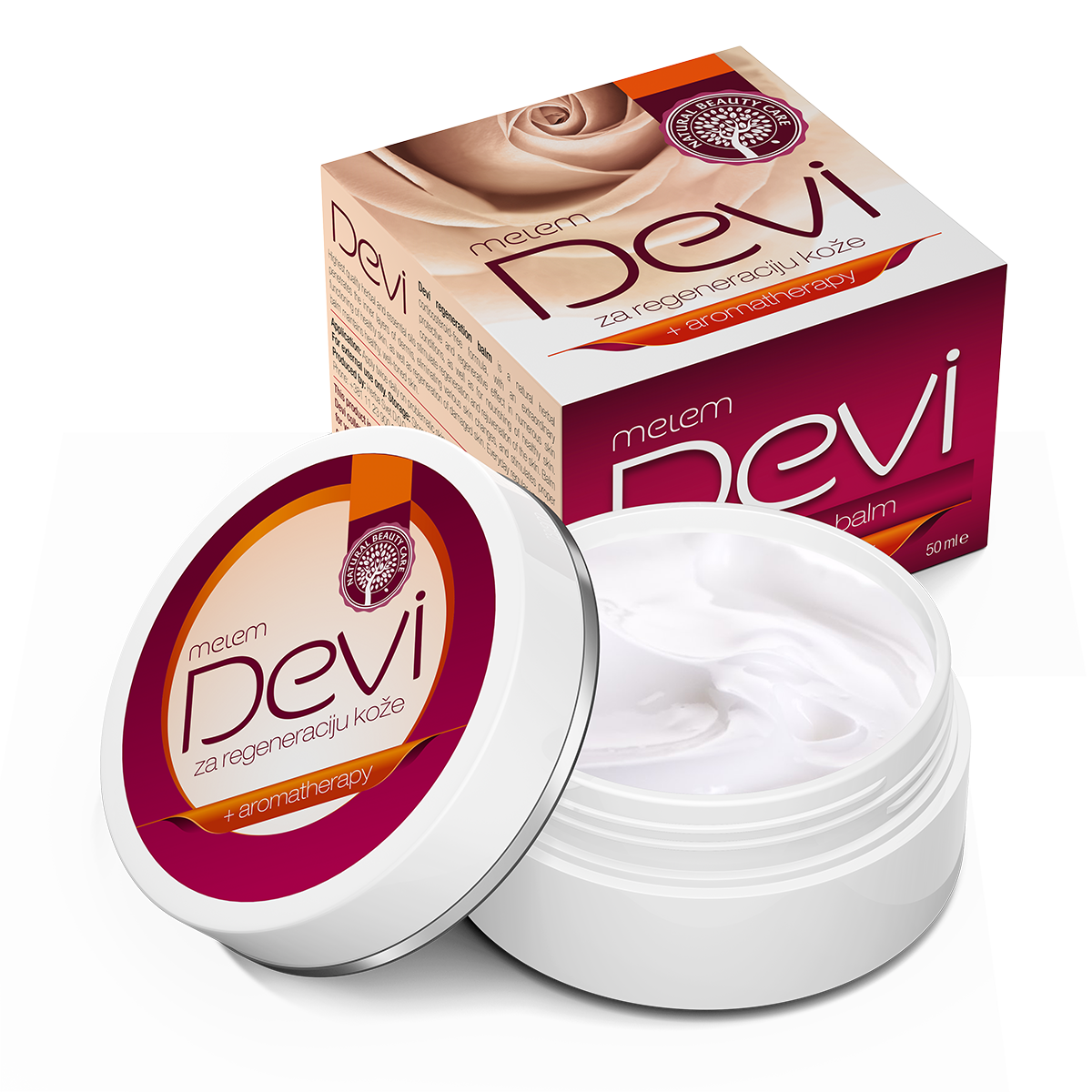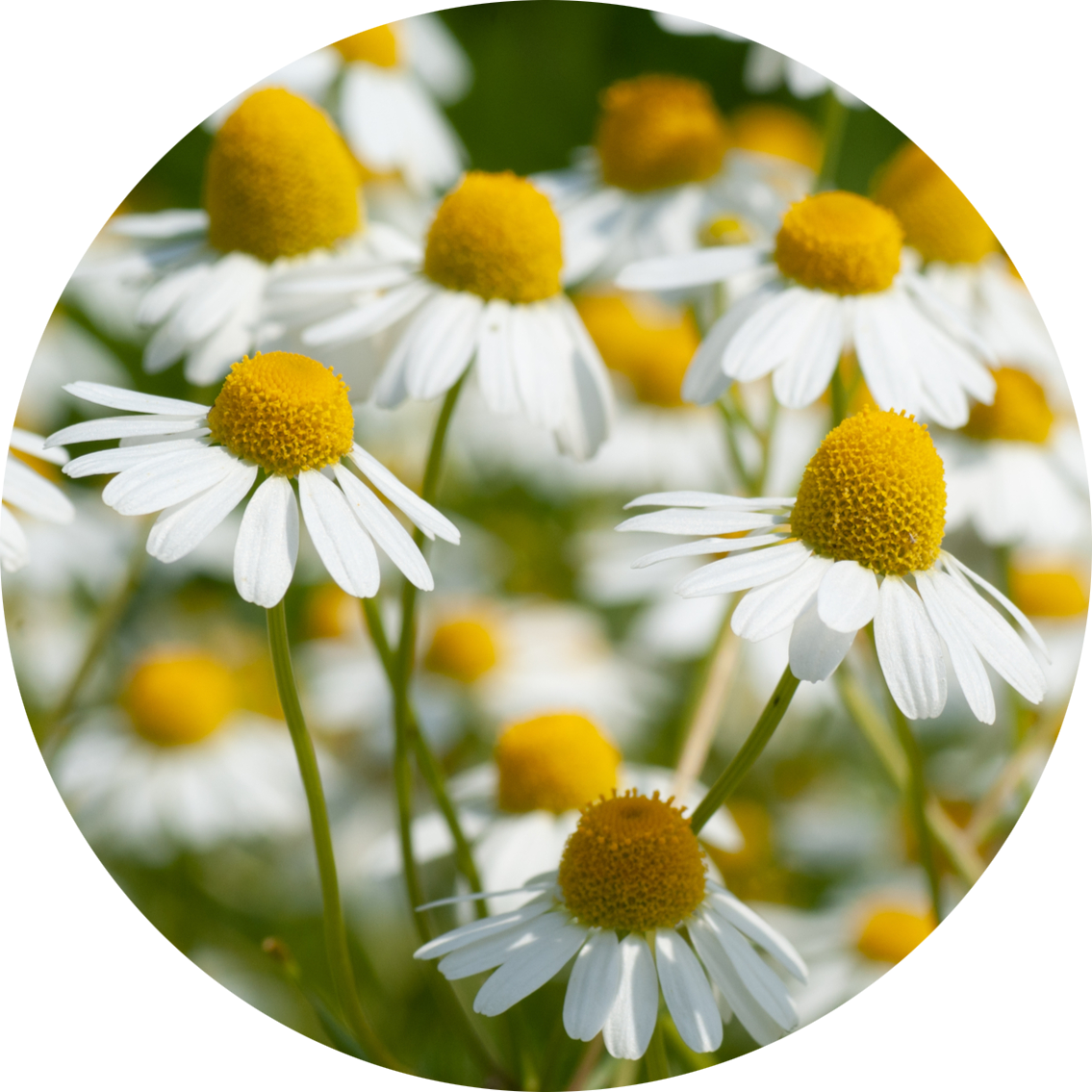(Matricaria recutita)
A medicinal plant that should be part of every household’s home pharmacy is chamomile. Its name comes from the ancient Greek chamos (near the ground) and melos (apple) – it describes its low growth and a sweet scent reminiscent of an apple’s. This modest plant with beautiful flowers and fragrance seems fragile and gentle, but is actually very resistant and tough and can survive in inhospitable places. That is why it has been declared the national symbol of Russia, where it is known as romashka, because its white petals symbolise purity and its yellow heart spirituality. It is often mentioned in fairy tales where dwarves use it as an umbrella. Its petals are reminiscent of eyelashes, so the flower looks like eyes that are wide open in amazement at the beauties and wonders of the world. Shakespeare appreciated its endurance and ability to recover and mentioned it in his tragedy Henry IV.
The first written document mentioning chamomile is the Ebers Papyrus, the oldest document in Egypt. This twenty-metre-long medical scroll was bought by Georg Ebers in Luxor at the end of the 19th century and is nowadays kept in the University Library in Leipzig. The text itself dates back to around 1500 BC, although it is believed to summarise the knowledge collected over centuries. It mentions about 700 treatments for various diseases, and among them is this magical medicinal plant. The Egyptians used chamomile both for treating the sick and embalming the dead, but also in religious rituals as a symbol of renewal and rebirth. Throughout the Middle Ages, chamomile was part of numerous pharmacopoeias and a plant used by all folk healers.
Today we distinguish two types of chamomile: Roman chamomile – Chamaemelum nobile, an annual plant native to Western Europe and North Africa; and German chamomile – Matricaria recutita, a perennial plant from Western Asia. The European Medicines Agency cites its numerous applications, which have now been proven by science. Although the two types of chamomile differ, both are medicinal, and the essential oil of both types contains its most valuable ingredients: bisabolol.
WHAT IS BISABOLOL?
Chamomile face-wash is a famous and proven old recipe used for skin care. Bisabolol or α-bisabolol is a monocyclic sesquiterpene alcohol that is the active ingredient in chamomile; it is a colourless oil which looks pale yellow in light. Today, bisabolol is highly valued in modern medicine, which has proven its strong anti-inflammatory effect. This ingredient in chamomile reduces the production of proinflammatory cytokines and reduces skin inflammation, as well as pain caused by injuries.
But that is only a small part of what bisabolol can give us. Its healing properties are most pronounced in dermatology and cosmetics because it contributes to skin hydration, protects it from free radicals and thus from the signs of ageing – wrinkles, freckles and blemishes, it soothes irritations, stimulates the skin’s ability to heal injuries and scars, and its antimicrobial action prevents and cures acne. This ingredient improves the absorption of some molecules, so today it is a valuable ingredient in preparations, balms, creams and serums.
If our skin is prone to irritations, acne and infections, bisabolol is the ideal solution. Thanks to its soothing effect, it is also excellent for rosacea, rashes, psoriasis and sunburns. In addition to being good for the skin, it is also great for hair, it prevents hair loss, strengthens hair roots and promotes its growth. At the same time, it is completely safe to use, and can also be used for the care of delicate children’s skin.
CHAMOMILE’S OTHER INGREDIENTS
In addition to bisabolol, chamomile contains a number of other medicinal ingredients: apigenin, luteolin, quercetin, scopoletin, herniarin, umbelliferone, chlorogenic acid… Apigenin has been proven to be effective against depression, insomnia and diabetes. The flavonoid luteolin has a proven anticancer, antioxidant, anti-apoptotic and anti-inflammatory effect. Skopoletin is a coumarin with a number of medicinal properties, some of which are antidiabetic, antihypertensive, antiproliferative, anti-inflammatory, antimicrobial, antioxidant … Herniarin has a beneficial effect on bronchial, urinary and blood vessels and helps with asthma, angina, atherosclerosis and urinary tract diseases. Umbelliferone is a coumarin that also has an anti-inflammatory effect, regulates blood pressure, helps with hepatitis, digestive disorders and asthma. Chlorogenic acid, otherwise also a healthy ingredient in coffee, does not only reduce inflammation and prevent diabetes, it also helps to fight obesity. All this put together shows why chamomile is an extremely potent medicinal plant.
Chamomile can help us with a number of disorders, from the common cold when its benefits can be used in a warm decoction for inhalation to complex and severe diseases. Its flavonoids significantly contribute to the health of the heart and blood vessels and regulate blood pressure. What we most often associate chamomile with is its calming effect on abdominal pain.
CHAMOMILE, FOR PEACEFUL STOMACH AND MIND
This medicinal plant can effectively soothe our stomach cramps, and its effect has been proven when it comes to babies, even when used as a poultice. Because it has an anti-inflammatory effect, a cup of chamomile tea can have the same effect as an aspirin. Chamomile “calms” the stomach, helps with gassiness, irritated intestines, ulcers, and helps digestion because it relieves cramps in the intestines. This plant regulates the pH in the stomach and reduces heartburn and is also valuable in the treatment of haemorrhoids thanks to its anti-inflammatory effect. Some studies have also established its effectiveness in controlling Helicobacter pylori, a bacterium that causes ulcers in the stomach and duodenum.
In addition to confirming chamomile’s beneficial effect on the stomach, researchers have come up with some surprising discoveries: for example that chamomile extract stimulates osteoblasts and could help prevent osteoporosis. What we know for certain is that this plant has a sedative effect, primarily thanks to the flavonoid apigenin, which binds to benzodiazepine receptors in the brain. And, finally, the smell of chamomile itself is therapeutic. Some research with cancer patients has suggested that aromatherapy can reduce anxiety and boost self-confidence in the most severely ill patients. Chamomile really brings us purity of mind and body, gives us hope and optimism.
Thanks to this abundance of benefits, chamomile, i.e. its ingredient bisobolol, has reached the Herba Svet laboratory and is used in Devi Skin Regeneration Balm which is rich in top quality and completely natural oils and butters. It is ideal used as daily care for both healthy skin and skin affected by eczema, psoriasis, rosacea, allergies, acne, hyperpigmentation, enlarged pores, blemishes, sebum secretion disorders… It is great to use it after sunbathing as well as for reducing scars after surgery. Although it has a strong effect, it is gentle, just like a chamomile flower.

